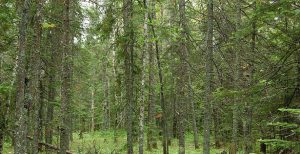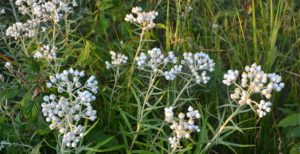Ontario Nature Blog
Receive email alerts about breaking conservation
and environmental news.
© Lora Denis
Guided hike, Manitouwadge © Mallory Vanier
One of the most challenging aspects of outreach is capturing and maintaining your audience’s attention. This is especially true when your audience is a group of high school students who are attending an obligatory event. The challenge is well-worth it, however, when you succeed in turning teens on to something new.
Using familiar technology to turn teens onto conservation science was my main objective during a recent visit to Thunder Bay. On this trip, I helped Ontario Nature’s Boreal Program staff deliver a community science event at a Manitouwadge high school.
After a 45-minute bus ride, we arrived at a NFMC reserve and immediately embarked on the first of two guided hikes. I led the group deep into the reserve in search of reptiles and amphibians. The rugged terrain was challenging, but we persevered and were rewarded with a spring peeper – not bad for a chilly September day.
Next, Will Stolz, Ontario Nature’s Forest and Freshwater Foods coordinator, led the students on a forest foraging walk, pointing out more than 20 easy-to-find edible plants. The more adventurous students tried a few of these plants, including balsam fir sap, otherwise known as “Nature’s Buckley’s.” Read Ontario Nature’s online Northern Forest Foraging Guide.

Back at the school, Mallory Vanier, Ontario Nature’s Boreal Program intern, and I presented on the importance of protected areas and community science. We discussed the threats facing Ontario’s reptiles and amphibians and the opportunities to contribute to their conservation.

Reflecting on the day, I believe that we were successful in turning at least a few teens into community scientists. And that is an awesome feeling!

Gananoque Lake Nature Reserve © Smera Sukumar